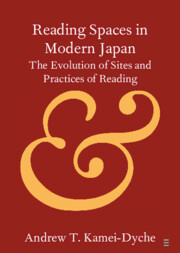Element contents
Reading Spaces in Modern Japan
Published online by Cambridge University Press: 03 March 2023
Summary
- Type
- Element
- Information
- Online ISBN: 9781009181020Publisher: Cambridge University PressPrint publication: 16 March 2023
References
- 2
- Cited by

